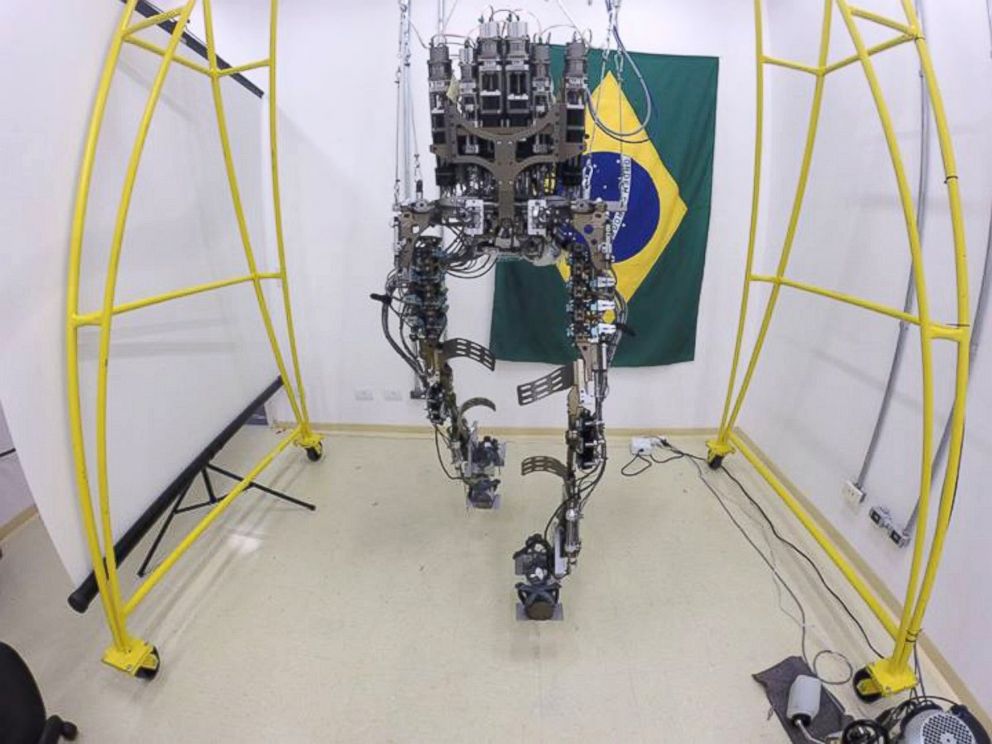Wearable Robots on the Rise to Help Paraplegics Walk
More paraplegics are using wearable robots to walk.
May 2, 2014— -- Wearable robots that help paraplegics walk seem to be much more common these days. Just this week they helped paralyzed veterans cross the stage at a Boston hospital, and a new mind-controlled model is expected to debut at the World Cup opening ceremony in Brazil next month.
One manufacturer, Ekso, recently learned that its version of the high-tech exoskeleton has helped paralyzed patients walk 7 million steps. That’s up from 1 million steps less than a year and a half ago.
“Ekso is becoming more commonplace,” Ekso Bionics spokeswoman Heidi Darling told ABCNews.com. “We are approaching 50 [rehabilitation] centers and 2,500 users.”
Read more about the World Cup exoskeleton here.

But that doesn’t mean patients should throw away their wheelchairs just yet, experts say. While wearable robots like Ekso and ReWalk can help propel patients forward as they shift their weight from side to side, they’re not perfect.
“They’re still at a point where we would not be comfortable saying people are absolutely independent in any environment they might want to operate them,” said Allan Kozlowski, who leads the Mount Sinai exoskeleton-assisted walking program in New York City.
For one, exoskeleton batteries only last between two and three and a half hours, Kozlowski said. And users can't walk quickly, either. The farthest he’s seen anyone walk with an exoskeleton device was a mile, but it took at least 50 minutes and usually much longer.
Still, Kozlowski said people who use the devices reap health benefits like better circulation, increased oxygen intake, pain relief and better bowel function. And the act of simply being upright and looking people in the eye has psychological benefits, Kozlowski said.
At the very least, people can use the devices to take brief walks. But some terrain can be a challenge, Kozlowski said. The ReWalk, for instance, can go up and down stairs, but it requires "a fair amount of skill" for the user, who has to take one stair at a time and hold onto the hand rail.
“It’s not pretty but it works,” Kozlowski said.
Read about one man’s first steps after falling from his roof and injuring his spinal cord.

The wearable robots have a few differences, but the Ekso and the ReWalk are currently only available in rehabilitation centers. The ReWalk is awaiting approval from the Food and Drug Administration for home use, and it has already been approved in Europe. Another device, called the Indego, is also awaiting FDA approval for rehab and home use.
Still, Kozlowski said exoskeletons could cost patients up to $100,000. And since they won’t replace wheelchairs, it’s unclear how much of the price tag insurance companies will cover.
But it’s hard to know what the future will hold. Just three years ago, very few rehabilitation centers had exoskeletons at all.





